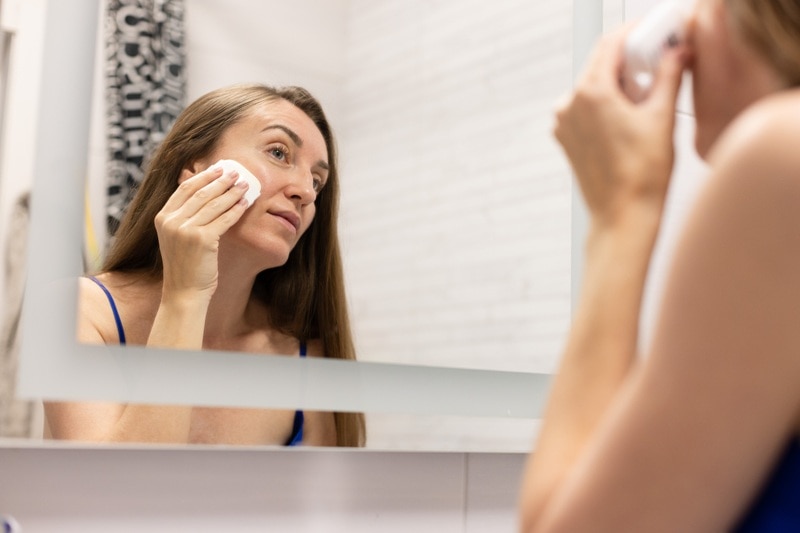The latest beauty trend increasing in popularity is waterless skin care, indicating a product lacks or has very minute concentration of liquid ingredients or water-based formulas. Instead, they opt for denser and richer bases as alternatives to cut back on water use and give skin a healthy and nourished appearance, feel and glow. Common ingredients present in waterless topicals include healthy oils, butters or balms, waxes and powders.
If you’re hesitant to add waterless products to your self-care and beauty regimen, don’t be. There are plenty of benefits that make waterless skin care incredibly helpful when applied consistently as part of your daily routine.
Waterless skincare products come in various forms, including balms, face or eye and SPF sticks, sunscreen powders and concentrated serums, cleansers or moisturizers, which can be used as a regular addition for maximum effectiveness and results. Plus, most are travel-friendly, which is perfect for safely stashing in your beach or day bag, as well as for anywhere on the go.
If you’re considering a transition to waterless skincare formulas and topicals, here’s a guide to everything you need to know about this buzzworthy skincare trend and its benefits, tips for use and application and choosing the right set of products for your individual skin type and needs.
What is Waterless Skincare & What Are Its Benefits?
There are several reasons to give waterless skin care and beauty products a chance, as they’re touted for boosting skin health and appearance, making the most of the product and savings, as well as offering convenience and ability to maintain a minimalistic and simple approach towards caring for skin without excess layering of topicals. Common benefits include:
High potency
Products containing very little to no water tend to be more concentrated in form with greater effectiveness and power. Without the added liquids, waterless products do not need to decrease strength or use preservatives in order to keep formulations and ingredients intact.
“They rely on oils, waxes, butters or dry powders to carry and stabilize ingredients, and without water, actives can sit at higher concentrations and often need fewer preservatives,” explains Dr. Shamsa Kanwal, MD, a board-certified dermatologist and both founder of and medical doctor at Aesthetic Evolution Skin And Laser Treatment.
“With less free water, microbes grow less easily, so many products need fewer preservatives, which can benefit reactive or eczema prone skin,” Kanwal says.
While a concentrated application offers direct, expedited and more noticeable results, it’s always a good idea to perform a patch test on skin first to avoid any potential adverse reactions. A high potency can cause irritation, especially for people with sensitivities or skin conditions. Irritation can also occur due to poor application, such as using excess amounts or applying daily without giving skin enough time to sufficiently adjust to the increased strength and power. A good rule of thumb is to avoid consecutive days and keep dosage small initially before building over time.
“I would recommend starting every other night, using pea sized amounts and increasing slowly over 2 to 4 weeks,” Kanwal says, along with a thorough patch test lasting 48 hours to be safe.
Boosted nutrients
Waterless skin care contains skin-healthy ingredients, including fatty acids, oils, waxes, antioxidants and nourishing skin agents, like ceramides, squalane and shea butter.
“Oil rich bases add barrier helpers like triglycerides, shea, squalane and ceramides, which help reduce transepidermal water loss and calm stinging within days,” Kanwal explains.
Ceramides replace lipids that act like mortar between skin cells, which reduces water loss and sensitivity, and shea butter has high levels of fatty acids to enhance skin tone and appearance. Squalane is soothing and nourishing, as it mimics natural sebum, softens quickly and improves tolerance to skincare agents and actives by helping to prevent and reduce side effects like sting.
“Phytosterols cushion cracks in the barrier and ease itch on dry patches while triglycerides, such as caprylic/capric triglyceride, are lightweight emollients that smooth skin without a heavy film in texture to rarely clog pores,” Kanwal adds.
Long shelf life
Waterless products are sustainable and have a longer shelf life, which makes a difference when it comes to spending habits, guaranteeing purchases are put to good use. By using fewer preservatives and liquids as well as keeping items secure in optimal storage spaces you’ll be able to extend usage further than most other non-waterless skincare products.
“Solids and powders ship lighter and often last longer if stored cool and dry with the caps tightly closed,” Kanwal says, adding that sustainability improves when you actually finish the product.
How To Use Waterless Skin Care
Popular forms include powder-based products like sunscreens and cleansers, balms and sticks, oil-based serums and moisturizers. Sticks and balms are compact, travel-friendly and portable, which make them excellent choices for SPF, eye or face balms and sticks. For sticks, waxes are common ingredients, such as beeswax or other plant-based waxes, like candelilla. Additionally, caprylic/capric triglyceride is another option and is a silky, breakout-friendly emollient.
Makeup remover cleansing balm is mess-free, easy and simple. “Warm a pea sized amount, apply thinly, and avoid rubbing hard to prevent micro irritation when using balms to remove makeup,” Kanwal says. “Then follow with a gentle water based cleanse if you wear heavy sunscreen or are acne prone,” Kanwal suggests. Or, you can make a cleansing balm at home.
Rich body butters and moisturizers lock in hydration for dewy, smooth skin for hours, especially when slept in for overnight absorption. Oil-based concentrated serums are potent and packed with skin-boosting ingredients like healthy fats and antioxidants to nourish and add moisture.
The best oils for topicals include jojoba, coconut and argan oil in particular for their numerous benefits. However, which oil to choose may differ based on your individual needs, skin type or conditions and any other products used regularly as part of your daily skincare routine.
“Jojoba and squalane suit most skin types, while argan helps very dry or mature skin,” Kanwal says. “Coconut oil is richer and may clog pores for some faces, so save it for body care or very dry patches,” Kanwal advises.
Jojoba oil and squalane are light, non-greasy and biomimetic, meaning they seal in moisture without clogging pores. Sunflower and meadowfoam seed oils are also popular bases as they are rich in linoleic acid, which supports skin barrier and calms redness.
“Shea and mango butters add cushioned occlusion for very dry or eczema-prone skin,” Kanwal adds, making them useful ingredients for luscious, rich and ultra-hydrating body butters.
A good trick is to reapply oils on damp skin, which helps improve spread and reduce heaviness. Reapply once daily on damp skin if skin feels dry, and spot-treat only where you feel tight. Oil on damp skin traps water and improves spread, allowing you to use merely 1 to 2 drops.
In general, it’s best to avoid layering several heavy balms at once, especially if you’re prone to acne and breakouts, since doing so may result in excess grease and clogged pores. Choosing non-comedogenic waterless skincare options will be most beneficial if you have oily skin, acne flare-ups or a list of topicals used daily and layered.
Powder cleansers are gentle and customizable, and they typically contain enzymes that gently exfoliate skin when fully dissolved in wet palms, massaged for 20 to 30 seconds and rinsed off. Powder sunscreens are best used over a base liquid or lotion SPF, which can be a handy bag essential for on the go fixes in the day.
“Powder SPF is usually a pressed or loose mineral formula with zinc oxide or titanium dioxide and is great for on-the-go reapplication, such as for the scalp or part lines, but hard to deposit enough powder to match the labeled SPF on bare skin,” Kanwal explains. “Use a base of liquid or lotion SPF 30+ every morning, let it set and then press on powder SPF with a dense brush for shine control and top-ups, making sure to reapply every two hours outdoors,” Kanwal says.
Do not rely on powder alone for water resistance. Use an SPF liquid moisturizer first and then go waterless for touch-ups in the day. And, give pressed powder makeup a try to stimulate the lymphatic system and boost circulation and radiance.
Best Waterless Skin Care Products to Try
From cleansing balms and sunscreens to moisturizers and butters, these are the best topicals to incorporate into your skincare routine.
Acure Invisible Sunscreen Stick SPF 50
Practical for on-the-go reapplication, this sunscreen stick has an SPF 50 for maximum UV ray protection and all-day wear. Plus, it’s invisible (meaning no white residue) and easily hits those tiny but super important areas that often get skipped, including the nose, ears and part lines. A broad-spectrum formula with chemical filters offers great protection against both UVA and UVB coverage, too.
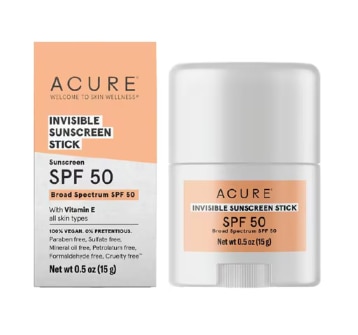
Andalou Naturals Deep Hydration Nourishing Cleansing Balm
This concentrated, waterless balm dissolves makeup and sunscreen without disrupting skin’s natural barrier. And, since it’s moisturizing and packed with anti-aging ingredients, it keeps skin more youthful looking, supple and taut. The oil-rich formula has both sunflower and safflower oil to promote a smooth, non-stripping cleanse, along with bio-designed collagen and hyaluronic acid to tighten, nourish and hydrate skin.
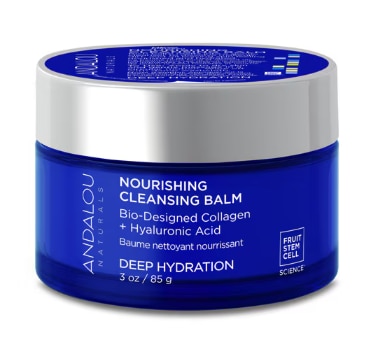
Honest Calm Renew Melting Eye Balm
“This eye treatment is a rich, occlusive balm formulated to minimize overnight moisture loss and visibly rejuvenate the delicate eye contour by delivering deep hydration and smoothing fine lines and wrinkles to give skin a firmer, more refreshed appearance by morning,” Kanwal says.
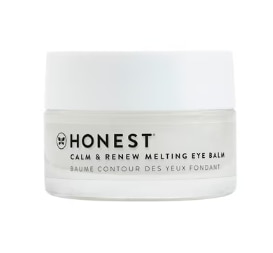
Earth Harbor Nymph Nectar Superfruit Radiance Balm
With a delicious sweet smell, high-antioxidant power and moisturizing properties, this wax-free balm contains fruit and vitamins to brighten skin and even tone, hydrating elements for a dewy, healthy and youthful glow. Seabuckhorn, sunflower seed oil and mango seed butter make this versatile balm effective and potent when used in the day, overnight as a sleep mask or on lips.
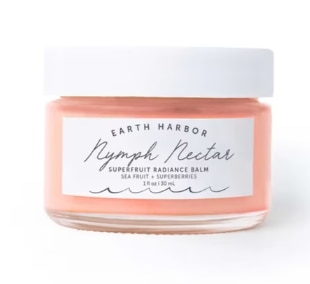
The post What is Waterless Skin Care? Benefits, Expert Tips & Top Product Picks first appeared on The Upside by Vitacost.com.

